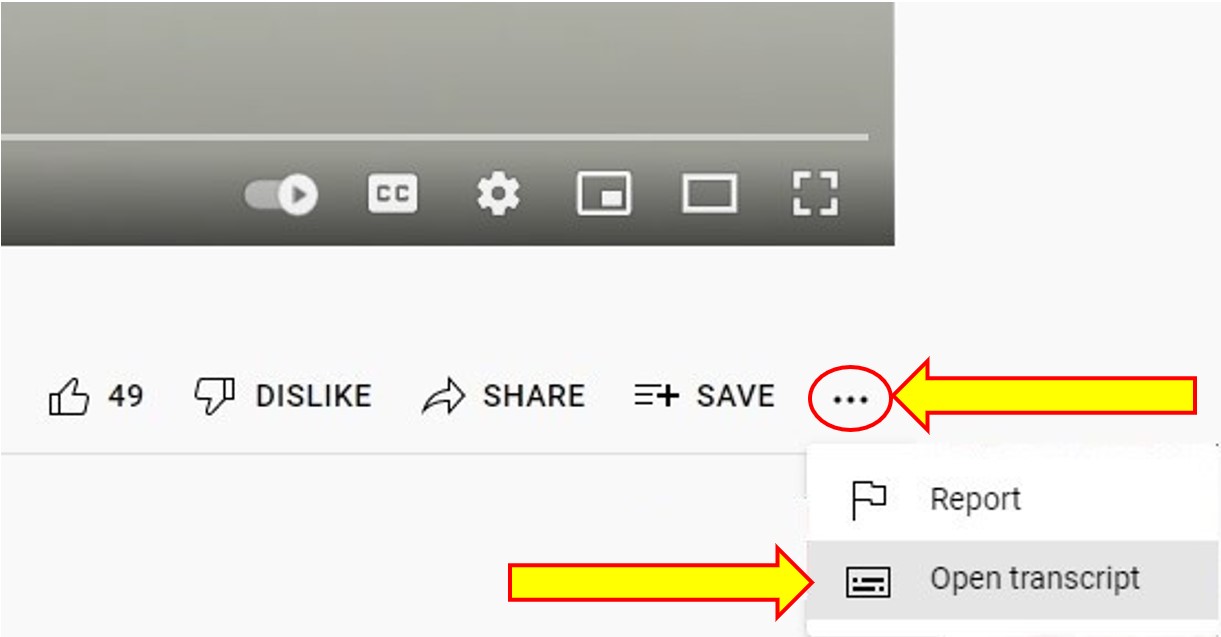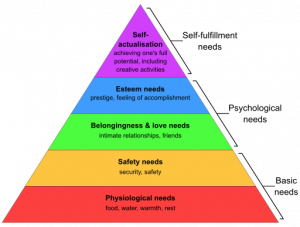1.9 Process Addictions
Learning Objectives
By the end of this chapter you should be able to:
- Discuss the various types of process or behavioural addictions
- Identify process or behavioural addictions and the impact on individuals and communities


WHAT DO YOU LIKE TO DO?
What makes you feel happy, satisfied, pleased?
- shopping for a new pair of sneakers of clothes
- exercising at the gym
- eating food
- Playing a new game
- walking
- working



If any of these apply to you, awesome, you are a human being with likes and dislikes! As humans we participate in any number of activities and behaviours depending on a multitude of factors including our exposure to activities, our upbringing, our socio-economic status and more. Have you ever thought about what you do when you are feeling stressed? Do these same activities apply, or do you do something else completely? If you are like some, you may ignore what is going on around you, including the problem you are dealing with (sometime called turtling).
What happens when a behaviour that we find rewarding becomes an issue or a problem? One of the questions we should ask is who decides a behaviour is an issue: an individual, a community, or a society? This will help us unpack whether a behaviour is concerning, and the ways we might address it.
Process Addictions

Process addictions are behavioural issues that involve compulsive engagement in an activity, despite potentially negative consequences. These include: Gambling, shopping, internet or online gaming, exercise, work, food or anger. We are going to explore what process addictions are and how it can impact the body, health, families, society and an individual.
- Gambling addiction – An uncontrollable urge to gamble, even when faced with financial, professional, or interpersonal losses associated with it.
- Shopping addiction – Also known as compulsive buying disorder or oniomania, this refers to the uncontrollable impulse to buy items, even if they are not needed or cannot be afforded.
- Internet or online gaming addiction – Uncontrolled use of online applications and video games, often resulting in a preoccupation with digital activities that interfere with other areas of life.
- Exercise addiction – An obsession over physical activity that can lead to overtraining, serious injury, or health issues.
- Work addiction – An excessive compulsion to work, often at the detriment of personal relationships and other aspects of life.
- Food addiction – Compulsive eating behaviour that may involve binging, purging, or using food as a form of emotional comfort.
Food for Thought
What are your favourite activities?
- Are your activities hobbies? Part of your job?
- How much time do you spend doing them?
- Is there a cost associated? How much have you spent on this activity?
- Is this an activity you do to make yourself happy when you are feeling sad/stressed/angry/upset?
- Do you do different activities when you are feeling unhappy feelings?
- Do you lose track of time?
As noted above, most people have activities they enjoy doing, and activities that help them cope with life’s daily stressors as well as more significant stresses or even traumatic experiences. Coping skills are important, and as social workers, having a set of effective coping skills for managing stress is important. You can help your clients discover coping skills that are healthy.
Activities
- Brainstorm possible coping strategies for life stress.
- Brainstorm possible coping strategies for work stress.
- Compare and contrast. Are there differences? Why do you think so?
The term ‘addiction’ and more recently substance use disorder describes a person’s use of substances and incorporates several features, such as repetitive engagement in behaviours that are rewarding, loss of control, persistent use despite negative consequences, and physical dependence, evidenced by withdrawal.(1) If this is the criteria for a substance use disorder, is it possible for a behaviour to fall in this category. When does an activity become an addiction or disorder?
Please watch the video(2) below to further your understanding of the concept of process addiction.
What is a Process Addiction? by Sunrise Residential Treatment Center. Addiction come in many forms. In this video Brad Simpson, Clinical Director at Sunrise Residential Treatment Center, talks about process or behavioural addictions.
Transcript

According to the American Psychiatric Association, a behaviour can be a disorder: “behavioural addictions result in a failure to resist an impulse, drive, or temptation to perform an act that is harmful to the person or to others”.(3) This would suggest many activities and Grant et al.,(4)suggest that “behavioural addictions include pathological gambling, kleptomania, pyromania, compulsive buying, compulsive sexual behaviour, Internet addiction, and binge eating disorder”(5); however according to the DSM-V, only one behaviour is currently considered a disorder: gambling.
Food For Thought
- Why do you think gambling is the only activity that is considered a disorder?
- Who makes the decisions on what is considered a disorder or addiction?
- Is a compulsion an addiction? Why or why not?
- Are there other activities that you think should be included? Why?
Gambling

Have you ever participated in a game of chance? Think back to your childhood, did you ever go to a carnival and pay to win a prize? Did you pay for the lucky dip in the fishpond? What about using the term “I bet you”…have you ever said these words? Did you really place a bet or wager or was that a figure of speech?
This section of our text is going to explore problem gambling and games of chance as part of the diagnosable illness in the DSM-V.
ACTIVITIES
- Define game of chance and gambling in your own words.
- Where would you go to participate in this activity (list as many ways possible).
Gambling is the one process addiction to make it to the DSM-V. What is gambling? Gambling is placing a bet (monetary, time, services or other) with the possibility of a desired result (monetary, services, time or other).(11) According to Kingston, Frontenac, Lennox, and Addington Public Health(12), 76% to 79% of adult Canadians participate in some form of gambling in a year. What does this suggest? It is important to consider we cannot look at gambling in binary terms, just as we cannot examine substance use in this way. Let us start with challenging negative feeling about gambling: what if gambling is connected to a good cause?
ACTIVITIES
- Is gambling positive or negative, or either, or neither, or something else entirely?
- Research local hospital organizations, non-profit organizations, community groups and other groups in your community.
- Have they ever used gambling as a way of fundraising? How?
- What was the result?
- Have you participated in one of these events?
- What was the result?
Based on your research, you may have found many organizations use games of chance to support their fundraising budget, for example,Princess Margaret Cottage Lottery, Sick Kids Hospital Lottery or QE 11 Home Lottery. What does this suggest about how Canadians feel about gambling?
Food For Thought
- When does gambling become harmful?
- What are the ways in which gambling can impact an individual? A family? A community?
Let us look at the ways gambling is problematic for some people.(13)
Gambling on Addiction: How Governments Rely on Problem Gamblers. by The Fifth Estate. When it comes to gambling, Canadians have plenty of skin in the game. Last year, we spent about $13 billion on legal, government-run gambling. That’s more than we spend on movies, hockey tickets, and Tim Horton’s — combined. Everybody knows that provincial governments in Canada love those gambling revenues, but the dirty little secret is just how much government casinos rely on problem gamblers to fill government coffers. Experts say that as much as 50% of that gambling revenue comes from problem gamblers. So who here is the real addict? Are provincial governments in Canada actually preying on gamblers? Despite promoting responsible gambling, a new investigation by The Fifth Estate reveals how government programs are failing to keep addicts out of their casinos, while reaping a windfall from those who make it in.
Transcript

In this example, gambling had a significant impact on Joe, not just financially but mentally.
ACTIVITIES
- After watching the Fifth Estate, take a moment and think about Joe. What kind of life did Joe have? What impact has gambling had on Joe’s life?
- What is “the machine zone” with Electronic Gaming Machines (EGM’s)?
- What does winning do to your brain?
- How are EGMs designed?
- Do you believe banned gambling is a form of treatment? Why?/Why not?
- Are there responsible gambling programs?
- What is the responsibility of the government for supporting people with a gambling addiction?
- What is the responsibility of casinos for supporting people with a gambling addiction?
According to Grant and Chamberlain,(14) many people with gambling disorder report an urge or craving state prior to gambling, as do individuals with substance addictions; gambling often decreases anxiety and results in a positive mood state or “high,” like substance intoxication; and emotional dysregulation often contributes to gambling cravings just as with alcohol or drug cravings. (15)
This indicates there are similarities between gambling and substance use. When we examine risk factors, identified by Allami et al.,(16) they include access to gambling opportunities, speed of reinforcement, socio-demographic, and psycho-social factors.
Who is most vulnerable for developing a gambling disorder in Canada?
- Women (female identifying) over 50
- young men (male identifying)
- young women (female identifying)
- Women (female identifying) over 50
Answer is young men (male identifying)
Did you know young men (male identifying) are those who are the most vulnerable for developing a gambling disorder?(17) Studies also suggest individuals living with mental health disorders are at a higher risk for developing a gambling disorder, in comparison to those with substance use disorders, though approximately 50% of participants with gambling disorder report substance abuse, and up to 63% of individuals seeking treatment for gambling disorder screen positive for lifetime substance use disorder.(18) Substance use and gambling together (for example, drinking and playing an EGM) are factors that an individual can control. (19) This is important to remember when developing harm reduction and health promotion programs and interventions for groups with gambling disorders.
ACTIVITIES
- What are other risk factors for a gambling disorder?
- What are the factors that individuals can control when it comes to gambling? What are the factors that cannot be controlled?
- Review five sources of gambling advertisements. Who do you think they target?
- Design a prevention activity that targets young male identifying individuals and communities. What factors do you need to include?
- Develop a responsible gambling promotional material. What do you need to include?
WHAT IS PROBLEM GAMBLING?
When you have difficulty putting limits on time or money spent betting on activities or events based largely on chance(20) you may have a gambling disorder. When working with individuals with mental health issues, Social Service workers must be aware of the risk factors and provide a holistic model of care. Knowing that gambling is one factor in a client’s life will be helpful as you work with them (remember intersectionality). This means working with the client and understanding their determinants of health. You must also help your client determine whether they are ready to address their gambling problem. If a client is interested in working with you to improve their gambling fortunately there are treatment options in Canada.
Regardless of your personal feelings about gambling, just as you would work with an individual with a substance use disorder in a nonjudgmental and caring way, you will work with individuals with problem gambling with the same kindness and respect. Knowing that gambling is a disorder with treatment options will improve your practice and improve the care your clients receive.
COMPULSIVE EATING, SEXUAL BEHAVIOURS, & INTERNET USE

The definition of “behavioural addictions has been recently expanded by health researchers in Canada, in CAMH, to encompass any behaviour characterized by (i) a feeling of tension or arousal before the action, (ii) gratification and/or relief at the time of executing the act, (iii) an inability to resist an urge or drive even against great obstacles or dangers, and (iv) the absence of consideration for the negative consequences that may affect family, friends, or work,(21) though this is not yet reflected in the DSM-V. While it is important to note that only gambling has made it to the DSM-V, behavioural addictions is a field in which there are many studies currently taking place. As we do not look at any of the disorders in this text in a binary (as neither black or white, positive nor negative), we must use an open approach to exploring the behaviours listed below. For this work there is a short list of behaviours that have been associated with addictions.
COMPULSIVE EATING

Food is a basic physiological need and we need food to survive. Based on Maslow’s hierarchy of needs below, there are many other needs from physiological to safety all the way to self-actualization. What role does food play in your life? Have you ever participated in a gathering with friends of family with food? Food has an important place in ceremony in Canada, from holiday celebrations to graduations to religious ceremonies and everywhere in between. Knowing the role that food has, as a basic need, and the way we use food, it is not surprising that our relationship with food is complicated. When does food become a problem? Have you ever used food to cope with a loss, stress, a difficult time? Some individuals use food as a coping mechanism, like the way an individual would use a substance. While the biological reaction a body has is different to food than to a substance, it has increasingly been suggested that some eating habits, such as the uncontrolled intake of high-calorie food rich in sugar and fat can be referred to as “food addiction” (Sauvaget et al., 2015).
ACTIVITIES
- Identify risk factors associated with “food addiction”
- Identify harms associated with “food addiction”
- Identify programs that support individuals with food related addictions in your community.
- Research an intervention that targets a specific demographic for “food addiction.”
- Share your top 3 learnings.
COMPULSIVE SEXUAL BEHAVIOURS (CSB)
What is Compulsive Sexual Behaviour (CSB)? CSB is “characterized by recurrent and intense normophiliac or paraphilic sexually arousing fantasies, sexual urges, and behaviours that cause clinically significant distress in social, occupational, or other important areas of functioning”.(22) The behaviours can include “Masturbation; Pornography; Sexual Behavior with Consenting Adults; Cybersex; Telephone Sex; Strip Clubs; or other” (p. 254). Like other disorders, CSB has compulsions, which manifest in sexual behaviour; “the sexual activity while initially resisted, are enacted to reduce anxiety and are often followed by feelings of distress” (p. 255). It can affect all genders; however, research currently suggests those who identify as male report CSB more frequently (p. 255). There are similarities between CSB and substance abuse, for example “withdrawal symptoms such as depression, anxiety, rumination, and guilt related to a reduction of sexual activities, as well as difficulties to stop or reduce the frequency of sexual activities” (p. 255). As other researchers in this area have noted, “excessive sex in itself is not necessarily problematic” (Griffiths, 2016, p. 2017); it is when the behaviour becomes problematic for the individual that we can consider CSB as a problem. The research on CSB as an addiction or disorder is not clear, therefore for the purpose of this text, let us examine some of the risks associated with CSB and address harm reduction interventions.
ACTIVITIES
- What is the age of consent?
- What are the risks associated with many sexual partners?
- How can you reduce these risks?
- How can you ensure appropriate boundaries when working with individuals who live with compulsive sexual behaviours?
- What community agencies can provide information and support for reducing harms associated with compulsive sexual behaviours?
When it comes to sexual activity and sexual behaviours in Canada, we are bombarded with messages daily. What is normal? What is excessive? What is appropriate, particularly when it comes to sex and gender. We are now in the age of the #MeToo movement, which has been a reckoning of sorts for people with many individuals in positions of power being investigated for sexualized violence.
ACTIVITIES
- Read the following article: The Facts About the #MeToo Movement and its Impact in Canada – Canadian Women’s Foundation
- What is one thing you learned?
The results of #MeToo are still being felt; this has shone a light on known facts including women being at an increased risk of sexualized violence in Canada(23). What does this have to do with compulsive sexual behaviour? Sex, gender, and sexuality are inextricably linked.
We do not want to characterize consenting sex and sexual activities as bad or negative and as Social Service workers we must constantly challenge our own beliefs to ensure our clients receive the best care.
COMPULSIVE INTERNET USE (CIU)

Do you own a phone? A laptop? A desktop computer? How often do you use this/these devices? What purpose do you use them for? If you use your laptop or phone for gaming, you may be surprised to know that gaming is noted in the DSM-V as a behaviour being suggested as needing further research. If you begin to quantify the time spent in front of a screen, would it surprise you? Compulsive internet use, including gaming, is a hot topic in the world of addiction research and it continues to evolve. As with the behaviours identified above there is no consensus as to whether CIU and, gaming, should be defined as an addiction. Are there risks associated with CIU and gaming? Yes, and the risks include a sense of a loss of control, anxiety, depression, and a loss of social skill sets among others (Vasile et al., 2017). Serious problems associated with CIU among adolescents include “refusal to attend school, cognitive problem, physical or psychological disorders, such as anxiety and depression” (Zhang et al., 2020, para. 1).
Food For Thought
- If you are working with youth, why should you be aware of CIU risk factors?
- What supports do you think would be appropriate to someone experiencing CIU?
According to Kuss and Griffiths(24), people who have CIU experience high levels of distress and negative consequences in their academic, professional, and personal lives. This may be what leads them to treatment. Some specialized treatment includes relaxation techniques, cognitive behavioural therapy, and journaling.(25) Whether you believe CIU to be a disorder that should be considered an addiction or not, it is real for many, and our response as Social Service Workers must be appropriate.
Please watch the following video(26) then complete the activities below.
Internet Addiction: Is it all in your Brain? by Demystifying Medicine McMaster. This video looks at the negative effects of internet addiction and how cognitive behavioural therapy (CBT) is used to treat it. CBT focuses on getting rid of bad habits and replacing them with alternative behaviours that are more healthy. Addiction is a complex problem that affects many people around the world. Addiction isn’t limited to substance abuse such as drug and alcohol abuse. It also includes behaviours such as internet addiction. Addiction makes someone unable to stop doing something, even though it causes them mental or physical harm.
ACTIVITIES
- Based on this video alone do you think CIU should be considered an addiction? Why or why not? Why does it matter?
- Can you find other videos with evidence to suggest other ways of looking at CIU?
- Imagine you are voting yes or no on including other behaviours in the DSM-VI. What do you vote for? Why? Provide at least two recent evidence-based research studies to back up your vote
IMAGE CREDITS
Maslow’s Hierarchy of Needs by Androidmarsexpress via Wikimedia Commons is licensed under CC BY-SA 4.0.
ATTRIBUTION:
“EXPLORING SUBSTANCE USE IN CANADA” by Julie Crouse is licensed under CC BY-NC-SA 4.0 with minor revisions for clarity, and ease of use
Reference:
- Chamberlain, S., Lochner, C., Stein, D., Goudriaan, A., Van Holst, R., Zohar, J., & Grant, J. (2015). Behavioural addiction—A rising tide? European Neuropsychopharmacology, 26(5), 841-855. https://pubmed.ncbi.nlm.nih.gov/26585600/
- Sunrise Residential Treatment Centre. (2015, May). What is a process addiction? [Video]. YouTube. https://www.youtube.com/watch?v=oZjZcSOGj6o
- American Psychiatric Association. (2013). Diagnostic and statistical manual of mental disorders. 5th edition. https://journals.sagepub.com/doi/pdf/10.1177/070674371305800502
- Ibid.
- Ibid.
- Grant, J. E., & Chamberlain, S. R. (2016). Expanding the definition of addiction: DSM-V vs. ICD-11. CNS Spectrums, 21(4), 300–303. https://doi.org/10.1017/S1092852916000183
- Grant, J. E., Schreiber, L., & Odlaug, B. (2013). Phenomenology and treatment of behavioural addictions. Canadian Journal of Psychiatry, 58(5), 252-259. https://journals.sagepub.com/doi/pdf/10.1177/070674371305800502
- Potenza, M., Higuchi, S., & Brand, M. (2018). Call for research into a wider range of behavioural addictions. Nature, 555(7694), 30. https://doi.org/10.1038/d41586-018-02568-z
- Grant, J. E., Schreiber, L., & Odlaug, B. (2013). Phenomenology and treatment of behavioural addictions. Canadian Journal of Psychiatry, 58(5), 252-259. https://journals.sagepub.com/doi/pdf/10.1177/070674371305800502
- Voon, V., Mole, T. B., Banca, P., Porter, L., Morris, L., Mitchell, S., Lapa, T. R., Karr, J., Harrison, N. A., Potenza, M., & Irvine, M. (2014). Neural correlates of sexual cue reactivity in individuals with and without Compulsive Sexual Behaviours. PLoS ONE, 9(7), 1-10. https://pdfs.semanticscholar.org/a413/18f2d3bb6c04796113 adb93c74e86ccd63b9.pdf?_ga=2.263209419.690242277.1636907049-69174705.1620417751
- Canadian Partnership for Responsible Gambling (2015). Overview. http://www.cprg.ca/About
- Kingston, Frontenac, Lennox & Addington Public Health (2021). Prevalence of gambling disorders. https://www.kflaph.ca/en/research-and-reports/gambling-and-gaming-disorders.aspx
- The Fifth Estate. (2017, Dec. 8). Gambling on addiction: How governments rely on problem gamblers. [Video]. YouTube. https://www.youtube.com/watch?v=m3aDOTSqh94
- Grant, J. E., & Chamberlain, S. R. (2016). Expanding the definition of addiction: DSM-V vs. ICD-11. CNS Spectrums, 21(4), 300–303. https://doi.org/10.1017/S1092852916000183
- Ibid.
- Allami, Y., Hodgins, D., Young, M., Brunelle, N., Currie, S., Dufour, M., & Nadeau, L. (2021). A meta-analysis of problem gambling risk factors in the general adult population. Addiction, 116(11), 2968-2977. https://doi.org/10.1111/add.15449
- Williams, R. J., Volberg, R. A., & Stevens, R. M. (2012). The population prevalence of problem gambling: Methodological influences, standardized rates, jurisdictional differences and worldwide trends. Ontario Problem Gambling Research Centre. https://opus.uleth.ca/bitstream/handle/10133/3068/2012-PREVALENCE-OPGRC%20(2).pdf
- Grant, J. E., & Chamberlain, S. R. (2016). Expanding the definition of addiction: DSM-V vs. ICD-11. CNS Spectrums, 21(4), 300–303. https://doi.org/10.1017/S1092852916000183
- Allami, Y., Hodgins, D., Young, M., Brunelle, N., Currie, S., Dufour, M., & Nadeau, L. (2021). A meta-analysis of problem gambling risk factors in the general adult population. Addiction, 116(11), 2968-2977. https://doi.org/10.1111/add.15449
- Centre for Addiction and Mental Health. (2018). Problem gambling and technology use treatment groups. https://www.camh.ca/-/media/files/pg-group_treatment-pdf.pdf
- Fattore, L., Melis, M., Fadda, P., & Fratta, W. (2014). Sex differences in addictive disorders. Frontiers in Neuroendocrinology,35(3), 272-284. https://doi.org/10.1016/j.yfrne.2014.04.003
- Garcia, F., & Thibaut, F. (2010). Sexual addictions. The American Journal of Drug and Alcohol Abuse, 36(5), 254-260. https://pubmed.ncbi.nlm.nih.gov/20666699/
- Canadian Women’s Foundation. (2021). The facts about gender based violence. https://canadianwomen.org/the-facts/gender-based-violence/
- Kuss D. J., & Griffiths M. D. (2015). Internet addiction in psychotherapy. Palgrave Publishing.
- Vasile, D., Vasiliu, O., Vasiliu, D., & Vasile, F. (2017). Cognitive behavioral therapy in Internet addiction – A case series. European Psychiatry, 41(S1), S784. https://doi.org/10.1016/j.eurpsy.2017.01.1496
- Demystifying Medicine. (2019, April 1). Internet addiction: Is it all in your brain? https://www.youtube.com/watch?v=8rGZpR5T-WU

